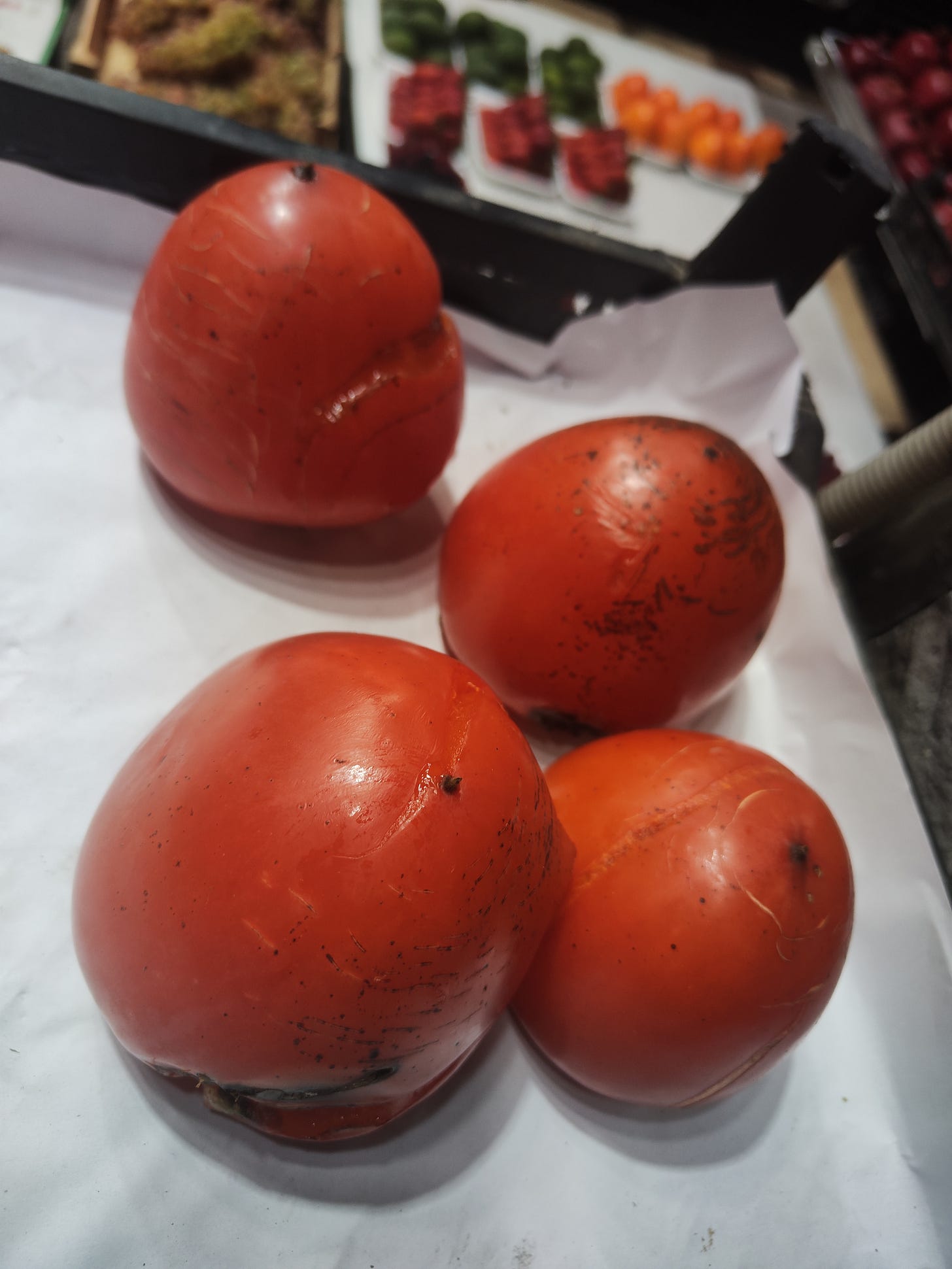It was love at first sight. Fiery orange persimmon fruits entered my life as I drove from Kutaisi airport to Kutaisi City, Georgia, in the car of a local I had just met. Apart from the welcoming people, the persimmon trees were the first things I noticed about the new land I had just encountered. Apart from the fruits, some of these trees were bare, sporting no foliage or leaves, nothing inedible apart from the branches bearing fruits. Hundreds of ripe, luscious fruits reminiscent of ball balls on a Christmas tree that spoke to me: pick me, eat me, love me, indulge in me. When I locked eyes with the persimmon, I decided it must have been a persimmon on the tree of wisdom in the Garden of Eden, absolutely impossible to resist. No wonder the Latin word for persimmon, Diospyros lotus, means "food of the gods".
Have you ever held a ripe persimmon? The chances are that you have not. When I held my first ripe persimmon, I knew I was experiencing something special, sacred even. The thing with a ripe persimmon is that it will get so ripe that you can't transport it further than from the tree to your palm. The persimmon bulges so ripely with the irresistibly delicious honey juices that if left on the tree just a minute too long, it will drop to the floor and explode. When I saw my first exploded floor persimmon, I was confused at my response. Although technically, the fruit was wasted on the floor, I did not feel sad about it. There was something about the way it was, the way it naturally exploded, that said, it's okay; this is how nature intended me to be, and there is plenty of me to go around.
In Georgia, it did seem that way. And the people do get them around. In season, persimmon sellers line the streets and pollute the markets. Each stall sports a persimmon (there are many kinds, eh). Before I knew it, my time in Georgia had turned into a mission to eat as many ripe persimmons as possible because I knew something about it was rare. Something about them seemed to me as though the nutrients in those fruits far surpassed anything I had eaten before. I have since discovered that there could be some method to my instinct (madness). The common persimmon is rarely grown as a food because it is exceptionally slow-growing. It takes four to eight years for a tree to bloom for the first time. Then, the tree often won't begin producing fruit for another three years. So there you have it. The persimmon fruits I had encountered were as unique as they had made me feel they were. Well, they are to me anyway. Each year that had passed before I had met the tree, the tree had grown stronger and stronger, bigger and bolder, and its fruits sweeter, more delicious, and more nutritious each autumn that it gave life to new fruits. I wanted as much of Georgia's rich and fertile lands to enter my body as I could manage, hoping to indulge in the fruits within the virtuous side of good and evil. I walked around each market stall, looking for the ripest and most ready-to-eat ones. Each time I had one in my palm, I loved it. And luckily, it kissed me back at every touch to my lips.
Me and my persimmon
The exploded persimmon
Persimmon shared at the church
Japanese-type persimmons. To me, they are the love child of a mango a pepper, and an apple. They would be really delicious in a salad with jamon serrano or something of that ilk
Honeydew flavour type, best enjoyed lonesome
More exploded persimmons on the sidewalk in Tbilisi
Each persimmon is unique
Persimmon tree at my apartment












Loved your post, thanks! Persimmons are a huge favourite in my family - so sweet and luscious 😋.
Have you tried hoshigaki - air-dried hachiya from Japan? In many cases, fruits suffer from drying, but hoshigaki are absolutely delightful. Sadly they're only available for one or two months a year. You must try some if you can get a hold of them - think there are a few artisan producers in California if you can't find Japanese ones.
If you've never tried them before, here are some articles that show why they're so highly prized.
https://www.bokksu.com/blogs/news/hoshigaki-a-beautiful-fall-tradition
https://www.eater.com/22203434/how-to-make-hoshigaki-japanese-dried-persimmons